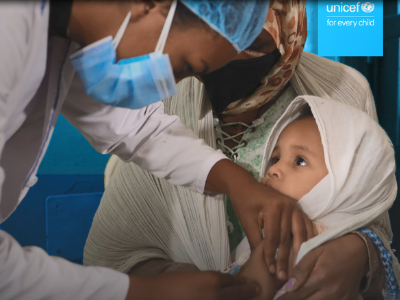Learning objectives
At the end of this series, we expect the user to be able to illustrate:
The main gender concepts that underpin UNICEF’s approach in humanitarian action;
The importance of integrating gender considerations into UNICEF’s emergency preparedness and response.
How to integrate gender in key stages of humanitarian programming.
Audience
Being brief and agile, this series can be used with a wide range of audiences from UNICEF’s personnel, to partners, donors, and government counterparts. It can also respond to a variety of purposes and be used for communication and advocacy, as a training resource, and as a tool for enhancing partners’ understanding and engagement on UNICEF’s work on gender.
Structure
The structure is as follows:
Module 1 focuses on gender in emergency preparedness and it is solidly grounded in the content of the Guidance on Gender Equality in UNICEF’s Emergency Preparedness. The purpose is to support practitioners on how to best integrate gender in the UNICEF’s emergency preparedness planning process.
Modules 2-4 cover the inaugural commitments and benchmarks on gender equality and the empowerment of girls and women that are part of UNICEF’s Core Commitment for Children in Humanitarian Action (CCCs). Each module in particular focuses on one CCC related to gender, describes the rationale for UNICEF’s approach, and how to operationalize it in the UNICEF’s humanitarian work.
Modules 5-8 focus on key phases of the humanitarian programme cycle, and gender integration therein.
These are: gender integrated needs assessment, which is covered under module 5; participatory design and implementation in module 6; module 7 is about collection and use of sex, age and disability - as well as other diversities, as relevant; and finally gender monitoring and reporting, including a range of illustrative gender indicators in module 8.
Module 9 describes gender analysis and how to do it or contribute to it in UNICEF’s work.
Module 10 illustrates the gender continuum and the gender-transformative approach as the overall goal UNICEF aspires to when it comes to gender equality.
Module 11 focuses on partnering with women’s and youth organizations as central to UNICEF’s mandate and commitment to the advancement of gender equality, and to the localization agenda.